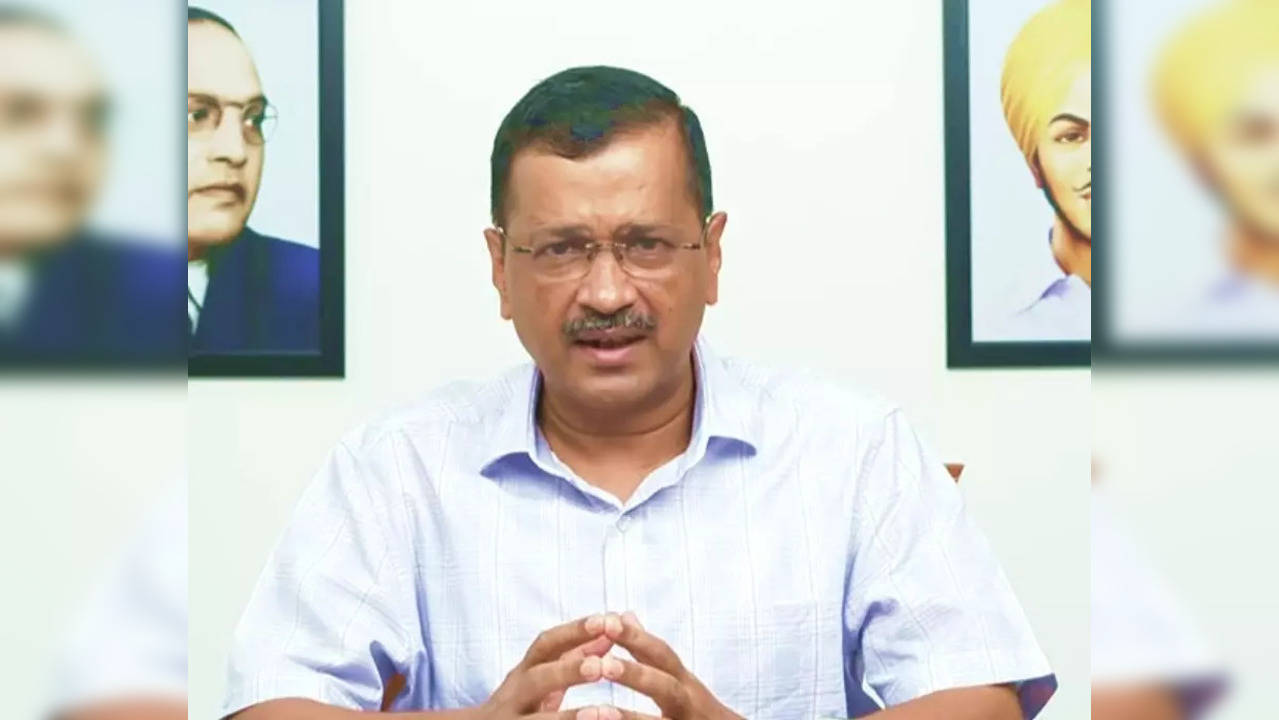Delhi government to announce 15 point winter action plan to combat air pollution today - all you need to know
Delhi Winter Plan : The 15-point action plan put up by Delhi Chief Minister Arvind Kejriwal's government to combat winter air pollution will be announced today.

Delhi CM Arvind Kejriwal
Photo : IANS
New Delhi: The 15-point action plan put up by Delhi Chief Minister Arvind Kejriwal's government to combat winter air pollution will be announced today.
The Delhi government has made it essential to put anti-smog guns at all buildings and demolition sites greater than 5,000 square metres, according to Environment Minister Gopal Rai, who was addressing a press conference.
Since the air quality is expected to stay below the established level for the implementation of mitigation measures until at least October 2, authorities in the National Capital Region (NCR) can begin implementing curbs as part of the updated Graded Response Action Plan (Grap) to battle pollution on Saturday.
When Delhi's air pollution levels reach specific thresholds, Grap suggests a list of restrictions. As the AQI declines, the limitations tighten. The air quality index (AQI), rather than merely PM2.5 and PM10, would be used as the trigger for the limits in the revised plan, which was announced by the Commission for Air Quality Management (CAQM) on July 13.
When the AQI hits 201, the first set of restrictions, which include a ban on the frequent use of diesel generator sets as a source of electricity, will go into effect.
Stage 2 is used when the AQI is in the "very bad" range (between 301 and 400), stage 3 when it is in the "severe" range (between 401 and 450), and stage 4 when it is in the "severe plus" range (above 450).
Despite being on the increase, Delhi's AQI was measured at 151 (moderate) on Thursday, and predictions indicate that it will likely stay in this range for the next two days, including October 1.
The CAQM subcommittee will be tasked with enforcing restrictions under the three most severe levels of Grap at least three days in advance, relying on forecasts made by the India Meteorological Department (IMD) and the Early Warning System, which was developed by the Indian Institute of Tropical Meteorology. Restrictions under the three most serious levels of Grap will be enforced preemptively rather than after pollution levels have spiked (IITM).
A basic set of actions, including agencies performing mechanised sweeping and watering roads, will be implemented for Stage 1 or the "Poor" category. Construction and demolition activities shall cease at locations greater than 500 square metres that have not been registered on the state government's "web portal."
According to a member of the CAQM subcommittee on GRAP, the three-day forecasts are being monitored, and a meeting can be scheduled if there is a probability that the AQI would go below ‘poor.’ “While measures under the Poor category are enforced automatically, a review meeting will still be held if the AQI is expected to deteriorate. This may happen around October 2 or 3, before rain once again washes away pollutants. For Stage II, there is still some time as AQI is unlikely to reach close to Very Poor any time soon,” said the official.
Construction and demolition activities will be prohibited in the "severe" or Stage 3 category, apart from projects that are absolutely necessary. Additionally, work on constructing pipelines and other linear public infrastructure like roads and highways will be permitted.
The most severe category, however, is Stage IV, where forecasts of the AQI reaching 451 or higher call for the stopping of truck entry into Delhi, a ban on Delhi-registered medium and heavy goods vehicles, a ban on operating diesel four-wheelers in Delhi that are not BS-IV or higher, a ban on construction and demolition (C&D) activities, including linear projects, and state governments may take additional measures like closing schools, colleges, and educational institutions.
Trending:
End of Article
Subscribe to our daily Newsletter!
Related News





Delhi Traffic Alert: Bike Rally to Affect Traffic on 12 Roads Today, Check List Here

Delhi Traffic: Heading To Watch IPL Match Tomorrow? Avoid Taking THESE Routes

Delhi To Witness Heatwave? Max Temperature Settles At 39.2°C, Here's What IMD Says

In a Complex 10-Hour Surgery, Doctors At Delhi Hospital Reattach Severed Hand Of Factory Worker

Air India To Deploy A350 Aircraft On Delhi-Dubai Route From This Date| Full Details Inside









